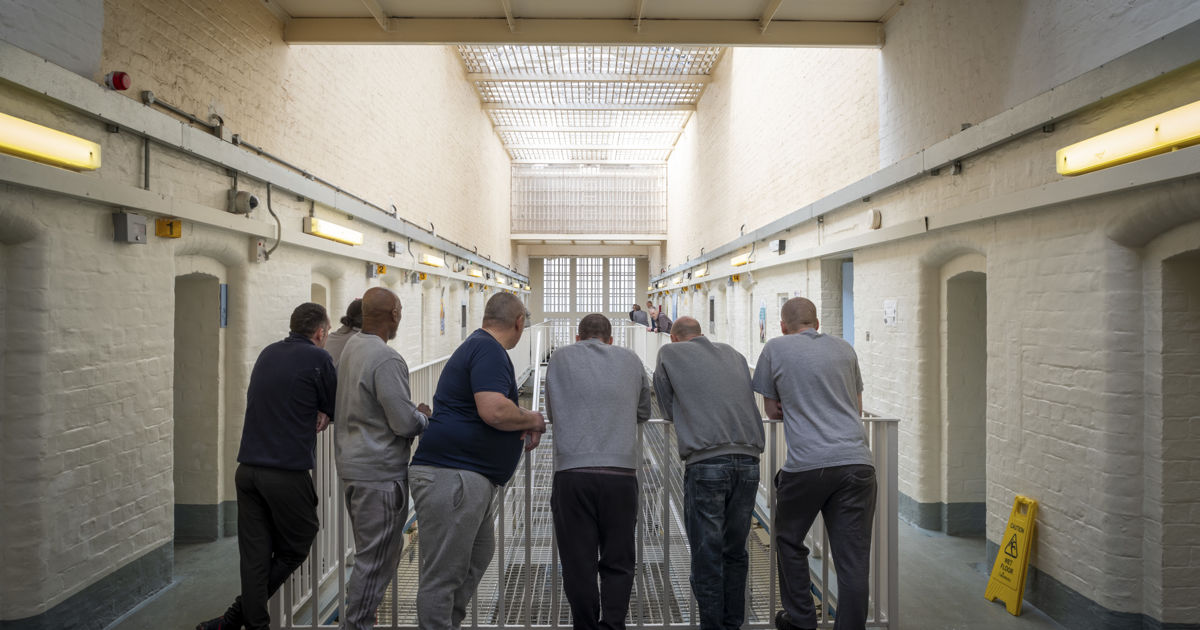
Exhibition at Midlands Arts Centre (MAC) will feature drawings, sculptures, and writing by people serving time in prisons that were built nearly 200 years ago.
Published today2 min read
Incarcerated: Contemporary Arts from the Victorian Prison will open in the new year. It is presented by the University of Birmingham and the University of Bath, in partnership with the Howard League for Penal Reform.
The exhibition of drawing, sculpture, crafts and writing by people serving time in HMP Liverpool and HMP Lincoln, as well as new photography from Andy Aitchison, and archival documents and interviews, will prompt conversations about living and working conditions in historical institutions today.
The exhibition at MAC forms part of a research project, ‘The Persistence of the Victorian Prison’, which considers how the fabric and function of Victorian prisons have changed over time, and what it has felt like to live and work in Victorian prisons in the past and the present. It also explores what the persistence of the Victorian estate means for the contemporary prison system.
The project is led by the University of Birmingham’s Professor Dominique Moran, Professor Matt Houlbrook, Professor Yvonne Jewkes of the University of Bath, and Professor Jennifer Turner, of Trier University.
The Victorian era was the most significant period of prison construction in UK history. During the period 1842 to 1877, a total of 90 prisons were built or significantly expanded, as part of a concerted building programme.
32 of these prisons are still in operation in England and Wales today. Together, they hold about one in four currently serving prisoners. Since most are ‘local’ prisons, serving the courts and holding prisoners awaiting trial or sentencing, almost all male prisoners will have spent time in one at some point.
Dominique Moran, Professor in Carceral Geography at the University of Birmingham, said: “Incarcerated: Contemporary Arts from the Victorian Prison provides an opportunity to learn about life and work in these prisons today. It provides an opportunity for prisoners to share creative responses to their environment and explain how existing in these spaces impact them today. We hope that people come along and explore a crucial part of our history, but also our present.”
Matt Houlbrook, Professor in Cultural History at the University of Birmingham said: “Through drawing, crafts, and creative writing, the incarcerated people whose work features in this exhibition bring the past to life. In so doing, they show us how histories live on through the material fabric of the Victorian prison buildings in which so many people are confined today.”
Professor Yvonne Jewkes from the University of Bath said: “The creative work produced by prisoners tells us much about the pragmatics of everyday life in a Victorian prison, but it also reveals a great deal about the sadness, regret, tragedy, humour and hope that prisoners carry. Many gained confidence and a sense of self-worth through the creative writing and art they did. It’s a fascinating and inspiring body of work.”
Deborah Kermode, CEO and Artistic Director of MAC, added: “We are delighted to be working with the University of Birmingham to present their exhibition Incarcerated: Contemporary Arts from the Victorian Prison. We believe at MAC that anyone can be an artist, no matter their circumstances. We have a commitment to showcasing work made by people with marginalised voices, which is why the exhibition makes for a great partnership.”
Incarcerated: Contemporary Arts from the Victorian Prison is a free exhibition, opens on Saturday 13th January and is open until Sunday 18th February 2024 from 11am-5pm.
This post was originally published on this site be sure to check out more of their content.








“AAU Started providing academic services in 1990, Al-Ahliyya Amman University (AAU) was the first private university and pioneer of private education in Jordan. AAU has been accorded institutional and programmatic accreditation. It is a member of the International Association of Universities, Federation of the Universities of the Islamic World, Union of Arab Universities and Association of Arab Private Institutions of Higher Education. AAU always seeks distinction by upgrading learning outcomes through the adoption of methods and strategies that depend on a system of quality control and effective follow-up at all its faculties, departments, centers and administrative units. The overall aim is to become a flagship university not only at the Hashemite Kingdom of Jordan level but also at the Arab World level. In this vein, AAU has adopted Information Technology as an essential ingredient in its activities, especially e-learning, and it has incorporated it in its educational processes in all fields of specialization to become the first such university to do so.
https://www.ammanu.edu.jo/“